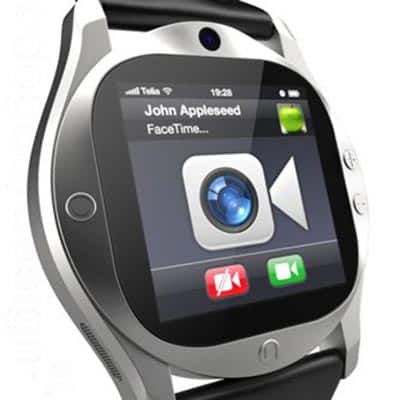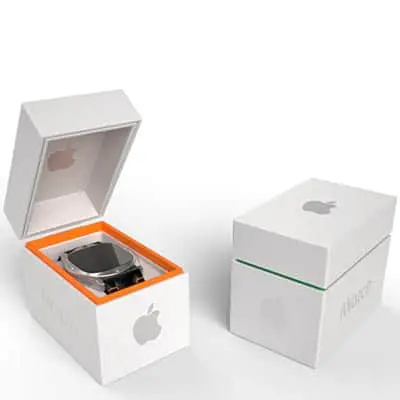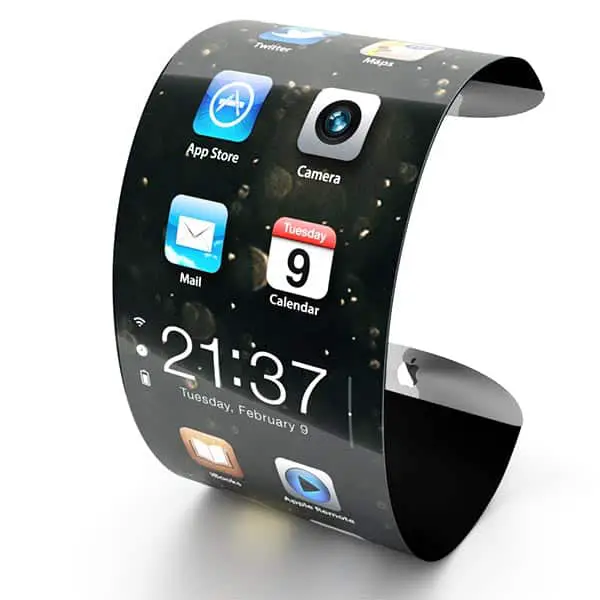As preemptive suggestions and criticism continue to swirl around Apple’s hypothetical iWatch, technophiles around the world are speculating how this rumored smartwatch can succeed in a field where most have failed. From the bulky and awkward Samsung SPH-WP10 released in 1999, to the Swatch Paparazzi series launched in 2004, and the Microsoft SPOT watch released soon thereafter with a display reminiscent of a Game Boy, several companies have made stabs at this niche market without ever quite hitting the nail on the head. So, what exactly was missing from these early smartwatch offerings?
Slight Improvements
More attempts at breakthrough smartwatch technology have recently emerged with the Martian and the Pebble. And, although these two watches make considerable improvements on design and functionality, they still manage to garner a mostly lukewarm reception from consumers. While the Martian smartwatch succeeds in aesthetic value, resembling a normal watch with a classy look, it has a very minimal LCD display which can only display 40 characters of text. Although it does allow for voice command, text updates, email and iPhone or Android compatibility, it doesn’t quite seem to justify its $249 to $299 price tag.
Backed by a 10 million dollar Kickstarter campaign, the recently completed Pebble project yielded a smartwatch with a 1.26-inch black and white LCD screen, an accelerometer, vibrating haptic technology, a magnetometer, Bluetooth support, and longer battery life. However, recent reviews indicate the Pebble’s battery life leaves a lot to be desired. Additionally, a host of other problems, including overheating, system glitches, and dead screens have been plaguing the first release of this new smartwatch.

iWatch to the Rescue?
With a relatively high batting average when it comes to supposedly risky or undeveloped niche markets, many technophiles believe that Apple is the best hope for designing a fully functional, crowd-pleasing smartwatch. As the New York Times inferred, Apple is very likely in the process of designing and developing a smartwatch with features only a company with a world-class design team, expansive resources and long list of unused patents can deliver.
10 Key iWatch Features
So, considering the underwhelming history of smartwatches and the pitfalls regarding their design and functionality, what are 10 iWatch features that could give Apple the longevity, flair and staying-power necessary to thrive in an unproven niche market?

1. Battery Life – By far the biggest disparity between traditional watches and smartwatches, extremely low battery life has threatened to take away all practicality from even owning a smartwatch. It’s hard to justify using the words “smart” or “watch” to describe a piece of technology, made in the year 2013, that can easily be trumped in stamina by something made in the 1980’s. Furthermore, the idea of a watch implies something reliable that you can leave on your wrist with little or no maintenance. For the iWatch to be a viable and smart product, it would need a considerable battery life that extends beyond a few days. In this case, maybe a solar power option or other alternative energy sources could help augment battery life.
2. Design and Social Perception – Regardless of how many features it may come loaded with, a new iWatch doesn’t stand a chance in the marketplace if it’s too big, too strange, or simply too embarrassing to wear. For the new iWatch to succeed, it would have to tread a fine line between functionality and style. The challenge with designing most wearable technology is how to make it socially acceptable, while maintaining its utilitarian aspect. With new wearable technology such as Google Glass emerging, there is a potentially detrimental social stigma attached to wearing obtrusive computers in public places. Simple sophistication will be a key iWatch feature.
3. Haptic Technology – Another key to the iWatch’s success might be something we are finding harder and harder to find around us: silence. Instead of constantly chirping or emitting annoying sound effects associated with phones, the iWatch would need to have vibrating, haptic technology to communicate in a silent way. With different types of vibrations signifying different alerts, alarms and updates, the iWatch could keep you updated without intruding too much on peace and concentration.
4. Low Price – Unless the iWatch has a 3D holographic display, can shoot lasers and comes with a movie projector for walls, it makes no sense to overprice what is basically a technological accessory. Granted, the iWatch could easily compete with other smart watches, but if priced right, it could also compete and cannibalize the traditional watch market. If Apple has truly big ambitions for their potential smartwatch, they will need to strike the right balance between price and iWatch features to induce consumers to buy their watch over a traditional wristwatch.
5. Waterproofing – Besides creating a strong chassis for fragile components, the iWatch would need to withstand everyday accidents involving coffee, water and changes in weather. Even though waterproofing has been a feature already common to many wristwatches for decades, it is still rare to find smart technology that doesn’t mind taking a bath once in a while. In this case, Apple could take a hint from Sony’s Xperia Z water resistant smartphone.

6. Interconnectivity – It goes without saying the iWatch would need to be fully compatible with iPhones, iPads and iBooks. Furthermore, compatibility with Android devices and computers running a Windows OS could greatly increase the iWatch’s consumer base. Utilizing a potential NFC chip, the iWatch could also communicate with third party NFC tags. Probably beyond the 1st generation, later improvements on the iWatch could yield interaction with garage door openers, gates, car ignitions and a variety of other non-Apple devices.
7. Curved Gorilla Glass – Already implemented since the first iPhones, Corning’s Gorilla Glass has been a constantly evolving project. After increasing its durability and scratch resistance with Gorilla Glass 2 and introducing Lotus Glass for LCD integration, Corning may be working Apple to develop a curved LCD display. Given the mechanics and technology needed to seamlessly meld a computer display to the human wrist, implementing curved glass into a smartwatch would be an unprecedented, impressive and unique feature for a smartwatch, let alone any electronic device. It might be the type of iWatch feature that could make Apple’s electronic bangle exclusively interesting.
8. Different Types and Sizes – Simply because it would be impractical and near impossible to make a one-size-fits-all smartwatch, the hypothetical iWatch would not only benefit from different sizes, but also from different price levels and models. As some consumers may prefer an iWatch loaded with features more common to a smartphone, and some may want their iWatch full of health monitors and statistical features, diversifying the iWatch line would only increase its appeal.
9. GPS and Maps – Paired with increased battery life, an iWatch featuring a straightforward and efficient GPS navigation system could make it a useful tool for metropolitan life and rural excursions. Parcel delivery services, bike messengers and hikers could all benefit from wearable GPS technology. Pushing the boundaries a bit further, a GPS system augmented by voice instructions or alerts could be very useful for the blind and visually impaired.
10. Health Monitors – Besides the obvious stopwatch and interval timers, an iWatch featuring a heart rate monitor, thermometer, pedometer, accelerometer and altimeter would all appeal to health and exercise enthusiasts. Already in cahoots with Nike, it’s a safe bet to say Apple would implement health-monitoring features already common to the Nike Fuelband in their potential iWatch.
Source
Apple iWatch Features: [Company Website]
